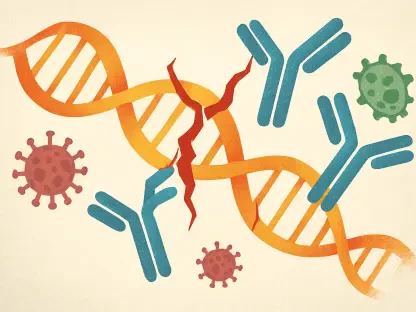When faced with a rare genetic disorder like hereditary angioedema (HAE), patients often confront an unpredictable and painful journey. Despite advancements in medicine, individuals with HAE experience sudden and recurrent episodes of swelling, which can severely impact their quality of life. The recent approval of CSL Behring’s Andembry (garadacimab-gxii), a groundbreaking monoclonal antibody, might signal a transformative moment in the way this condition is managed, providing a ray of hope for those affected by it.
The Growing Urgency in Addressing Rare Genetic Disorders
Hereditary angioedema is a condition that affects approximately one in 10,000 to one in 50,000 people around the world. Patients endure unpredictable, debilitating swelling in various areas, including the abdomen, face, and extremities. The physical and emotional toll of these attacks is significant, often causing anxiety due to their sudden and severe nature. As the medical community strives to offer more effective solutions, the question remains: Does Andembry hold the key to significantly changing the landscape of HAE treatment?
Current Hurdles for Patients Living with HAE
The road to managing HAE is fraught with challenges. Many existing treatment options only mitigate symptoms once an attack has commenced or offer limited preventive measures. This leaves a notable gap in patient care, with individuals seeking more reliable, long-term solutions. Despite various therapeutic approaches, including androgens and newer drug formulations, the demand for a treatment that can offer sustained relief and prevent attacks altogether persists. There is a considerable unmet need within the HAE community for innovations that directly address these limitations.
The Advent of Andembry as a Therapeutic Game-Changer
Andembry emerges as a promising contender by presenting a novel mechanism of action. It effectively targets factor XIIa, a pivotal plasma protein intimately involved in HAE attacks. Encouraging outcomes from the phase 3 VANGUARD trial showcase a substantial reduction in the frequency of these attacks. Notably, 62% of participants achieved an attack-free status over the trial period, highlighting the drug’s effectiveness. This innovative approach champions proactive management and a promising safety profile, adding a new dimension to the therapeutic arsenal available to HAE patients.
Perspectives from Medical Professionals and Patients
Healthcare professionals are optimistic about Andembry’s potential to set new benchmarks in HAE management. Dr. Elise Whitmore, an expert in genetic disorders, states, “The introduction of Andembry could very well redefine how we approach treatment for hereditary angioedema.” Patients and their families echo this sentiment, expressing hope for a more constant quality of life devoid of sudden disruptions. Professional testimonials suggest that Andembry could become an integral part of the long-term management strategy for this genetic disorder, offering patients enhanced control over their condition.
Practical Implications and Future Outlook for HAE Treatment
The availability of Andembry, administered monthly through an auto-injector, marks a significant convenience in the daily lives of patients. It introduces a shift from traditional administration methods, offering a more streamlined approach to preventive care. As patients consider this new option, the integration of such treatments into daily routines might redefine what living with HAE looks like. Looking ahead, Andembry’s entrance into the market is likely to spur further innovation and development in the management of hereditary angioedema, paving the way for advanced therapies that could improve patient outcomes.
In conclusion, the emergence of Andembry could mark a pivotal shift in the paradigm of hereditary angioedema treatment. Its effectiveness and innovative delivery method offer patients newfound hope and convenience. By potentially fulfilling unmet needs within this community, it underscores the importance of continual innovation in rare disease management. As more patients evaluate Andembry as a treatment option, the prospect of enhanced control over HAE becomes an attainable goal, illustrating the evolution of genetic disorder management.









